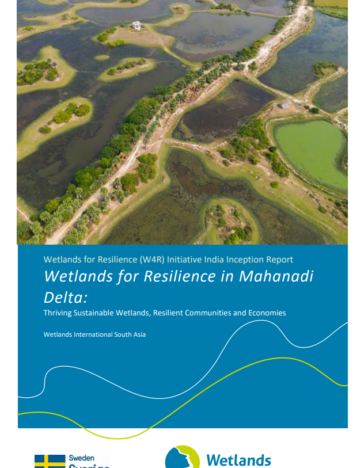
Wetlands 4 Resilience in Mahanadi Delta
The Mahanadi Delta, situated on the east coast of Odisha, India, is a dynamic composite delta. With the Mahanadi River spanning 851 km, it holds one of the largest drainage basins on the east coast.
The delta’s fertile soil is a biodiversity hotspot, supporting a wide array of flora and fauna from tigers and elephants and fishing cats to aquatic plants like Azolla pinnata and Nymphea nouchali. Mangrove ecosystems, in particular, play a crucial role in stabilising the shoreline, preventing erosion, and providing breeding grounds for various marine species. This area, particularly Nalaban Island, serves as a habitat for prawn fish and supports numerous bird species, making it a hotspot for dolphin sightings.
The Mahanadi Delta, historically resilient to floods and droughts, underwent significant changes due to 19th-century water regulation projects. Hydraulic structures, including the Naraj Spur and Hirakud Dam, aimed at water control for irrigation and flood prevention, led to hydrological fragmentation. Subsequent embankments and canal systems worsened issues, causing waterlogging and a 32% decline in wetland area from 1975 to 2010. Mangrove conversion along the coastline and nutrient pollution in wetlands added ecological challenges. Unplanned development transformed the once flood-dependent landscape into a flood-vulnerable one, underscoring the need for sustainable delta management.
The report below aims to assess the roles and functions of wetlands as a resource to support sustainable development and resilience in the Mahanadi Delta, a landscape within the Wetlands 4 Resilience (W4R) initiative. Effective management of Mahanadi wetlands, including restoration and conservation, holds enormous potential to contribute significantly to climate adaptation and mitigation and protect biodiversity. As part of W4R’s inception stage, regulatory efforts and management approaches were examined through case studies and the indigenous knowledge of wetlands in the Mahanadi Delta. The insights gained through these case studies deliver insights and actionable recommendations for enhanced management and upscaling tangible actions in the further phases of the initiative.

